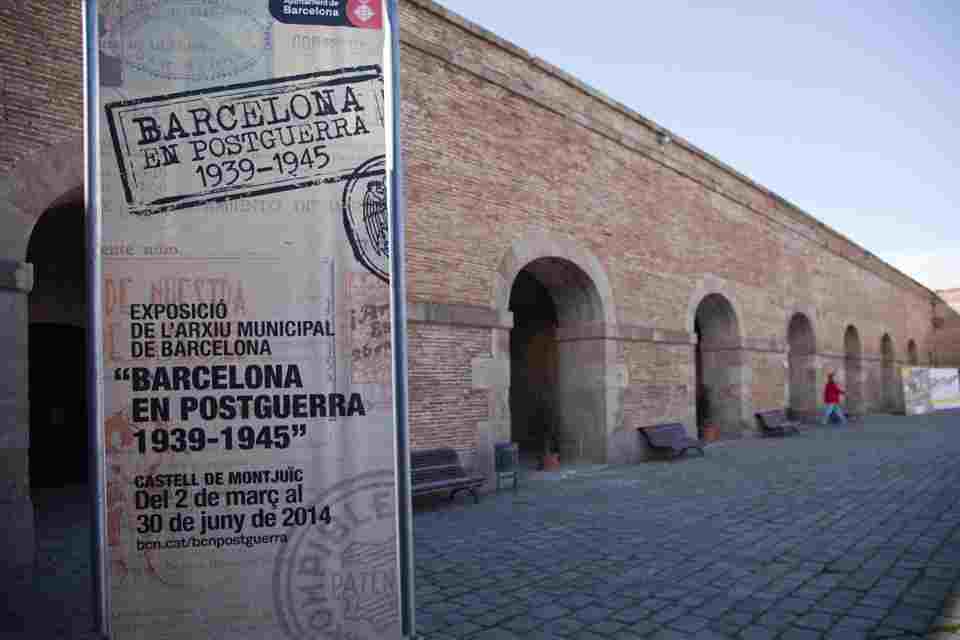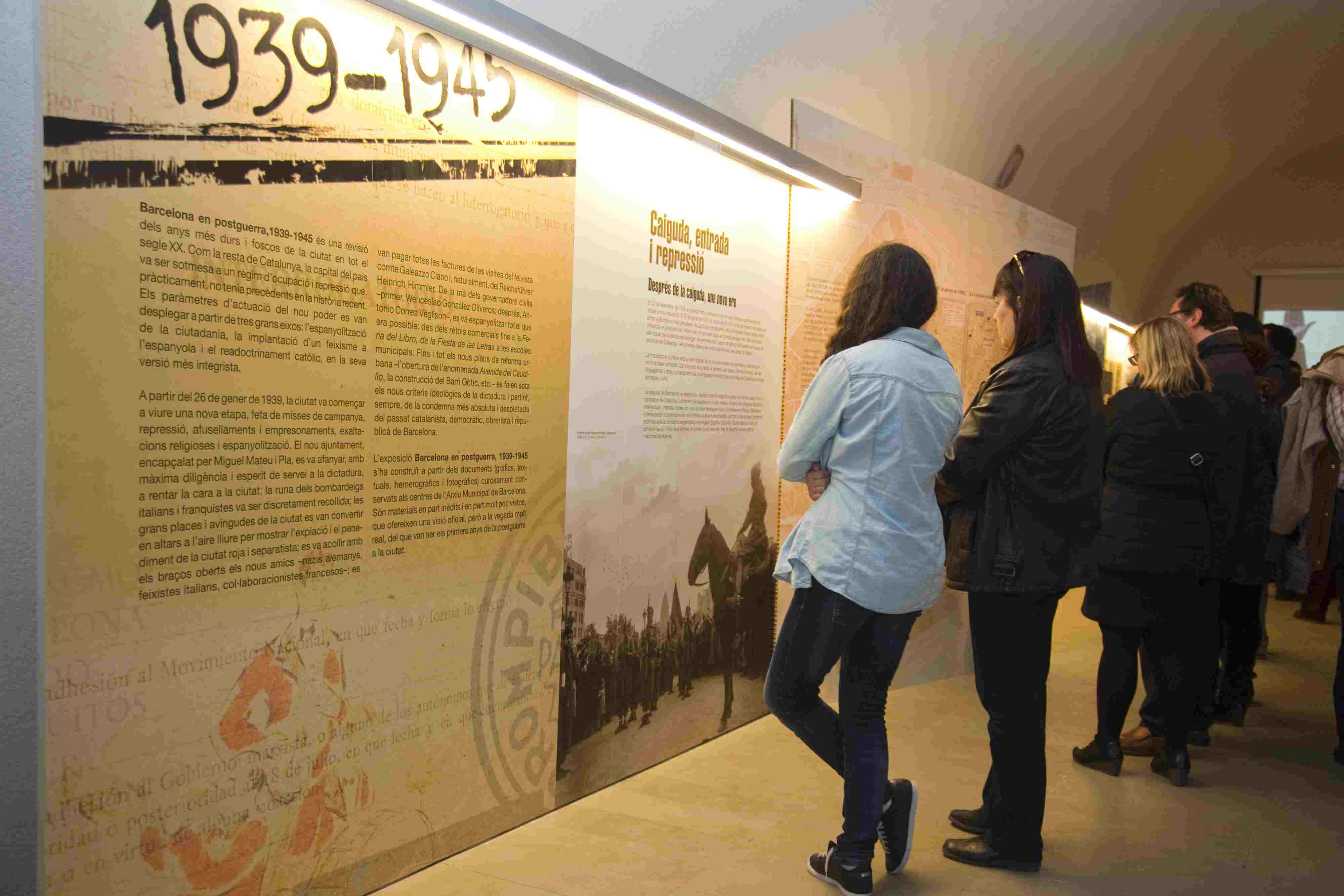This exhibition, held at the Castle from 2 March to 30 June 2014, explored the post-war period through more than 250 documents including drawings, texts, photographs and newspaper articles, from the entry of Franco's troops in the city on 26 January 1939 to the end of the mandate of the Francoist mayor Miguel Mateu i Pla in 1945.
The exhibition Barcelona en postguerra, 1939-1945 (Post-war Barcelona, 1939-1945) reviewed the hardest and gloomiest years of the twentieth century in the city.
Like the rest of Catalonia, Barcelona was under the yoke of a regime of occupation and repression practically unprecedented in recent history. The policies of the new authorities were deployed in three main areas: the spanification of the citizens, the implementation of Spanish fascism, and Catholic re-indoctrination in its most fundamentalist version.
As of 26 January 1939, the city entered a new period consisting of open-air masses, repression, imprisonment and executions, religious exaltation and spanification. The new city council, headed by Miguel Mateu Pla, took great pains, applying maximum diligence and spirit of service to the dictatorship, to give the city a facelift: the debris left by the Italian and Francoist bombing campaigns was quietly cleared away; the city’s large squares and avenues became outdoor altars where the red, separatist city could show its repentance and atonement; the new friends was welcomed with open arms – German Nazis, Italian fascists, French collaborationists; and all bills were paid for visits by the fascist Count Galeazzo Ciano and, naturally, the Reichsführer Heinrich Himmler. In the hands of the civil governors – first Wenceslao Gonzalez Oliveros and then Antonio Correa Véglison – everything that could be was spanified: from shop signs to the city book fair to the literature festival in municipal schools. Even the new urban development plans – the opening of the so-called Avenida del Caudillo, the construction of the Gothic Quarter, and so on – were prepared under the new ideological criteria of the dictatorship, and based always on the most absolute, ruthless condemnation of the pro-Catalan, democratic and republican, working-class past of Barcelona.
The exhibition “Post-war Barcelona, 1939-1945” was based on documents (images, texts, newspaper and photographic archives) carefully stored in the installations of the Municipal Archive of Barcelona. In part unpublished and in part rarely viewed material, they offer an official– though also very real – view of the early post-war years in the city.




